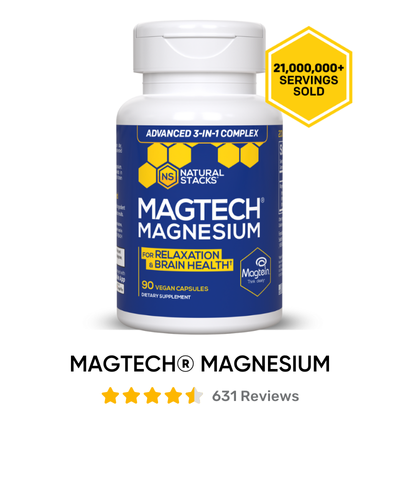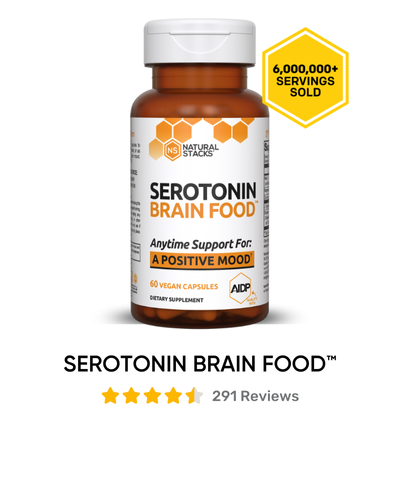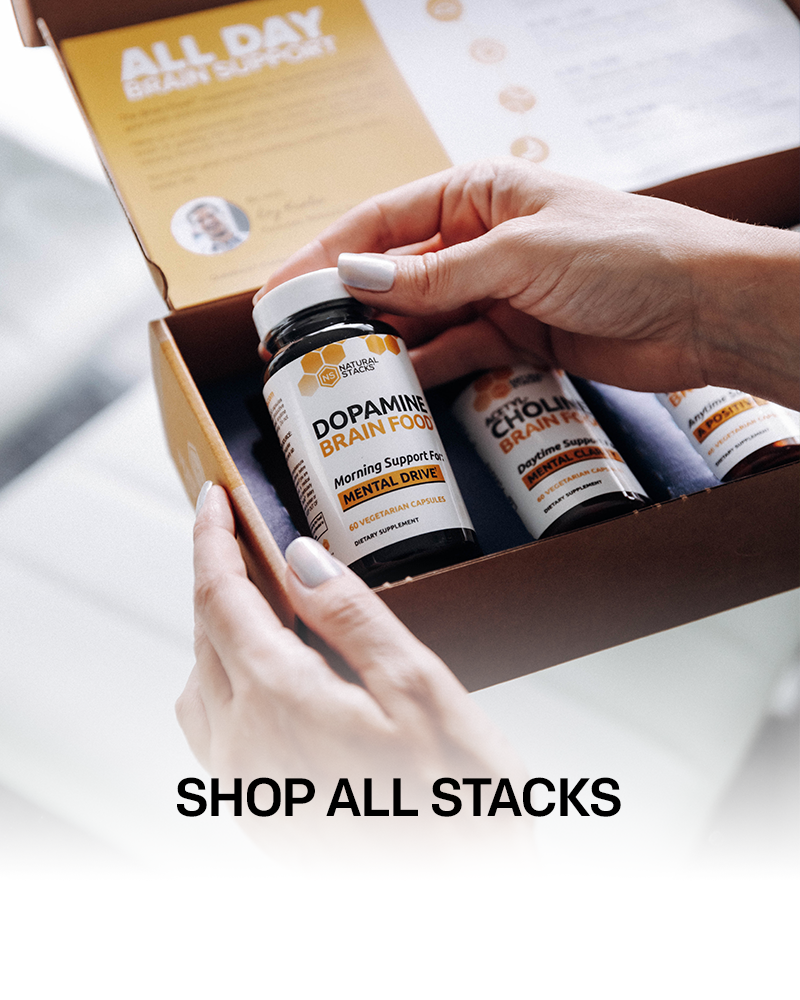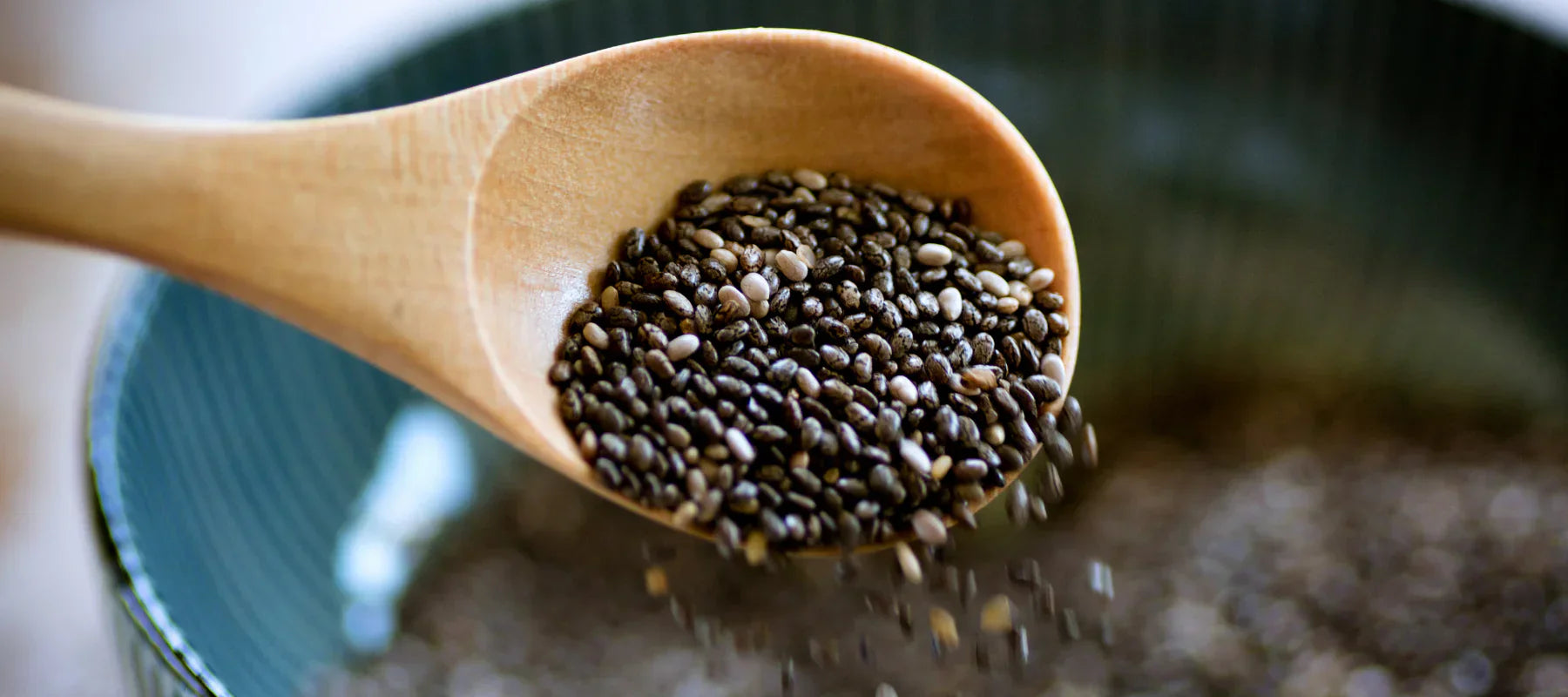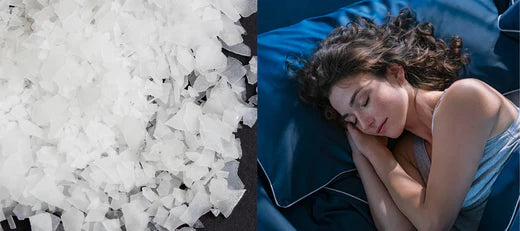10 BEST ANTI INFLAMMATORY HERBS AND FOODS: PLUS HOW TO USE THEM

Inflammation is the root of many dangerous diseases that are destroying our bodies, causing us pain, and making us sick -- heart disease, diabetes, cancer, arthritis, and Alzheimer's to name a few. It's time to address what's been turning America into an inflammation nation and learn how to reverse this plague.
Before exploring what helps reduce inflammation, it's important to understand the different types of inflammation and what makes chronic inflammation cause disease.
WHAT CAUSES INFLAMMATION?
Your body is built to protect you. One intricate and amazing way it does this is through the process of inflammation. Simply put, inflammation is the way your body reacts to injury or infection. When you face damage (scrape, cut, ouchie) or a foreign substance (bacteria, virus, food allergy) your body send out it's remedy troops (white blood cells) to visit the site of invasion and defend with healing chemicals.
ACUTE INFLAMMATION
Acute inflammation occurs at the site of damage. This is the kind of inflammation you get after injuring yourself. Think about if you were to fall and hit your knee and get a boo-boo. You would get redness, pain, and swelling. This is your body mobilizing immune cells (white blood cells) and increasing blood flow to the area to alleviate the wound. This reaction is short-term and happens within minutes to hours.
CHRONIC INFLAMMATION
Chronic inflammation is the one you want to look out for. This happens when your body makes repeated attempts to heal and contain a source of injury or infection over a longer period of time -- up to weeks of months. This is the type that's related to inflammatory diseases (allergy, autoimmune disease, inflammatory bowel disease, asthma, celiac disease). It's also a risk factor for dangerous conditions such as cardiovascular disease, diabetes, cancer, and Alzheimer's disease.
PREVENTING CHRONIC INFLAMMATION
There are many anti-inflammatory medications on the market, ranging from aspirin and ibuprofen to prescription drugs. But these carry unpleasant side effects and can be addicting. Some over-the-counter pain relievers may even make matters worse -- NSAIDs (aspirin, Ibuprofen, Naproxen) cause damage to your gut health, causing more injury, inflammation, and possibly leaky gut syndrome.
The key is to support your body's natural ability to fight inflammation, through eating an anti-inflammatory diet and adding inflammation-fighting herbs and supplements on a daily basis.
1. CURCUMIN (TURMERIC)

Curcumin is that "miracle compound" found in the golden-colored root turmeric (curcuma longa). Boasting 1000s of positive studies, this compound is constantly surprising researchers by the extent of its anti-inflammatory abilities--most notably its effect on arthritis and osteoarthritis.
If you’re using raw turmeric, this can be difficult to calculate - you’ll have to figure out how much curcumin is in your turmeric, and this can vary based on the way that it’s processed and grown.
Common doses of curcumin range from half a gram to 7.5 grams daily, split into 3 or 4 doses. It’s generally not recommended to consume more than 3 mg/kg of curcumin for your body weight.
Curcumin is about 10 times more potent and effective when it’s consumed with black pepper (thanks to a compound called piperine) or a healthy fat source.
Even better, you can use a patented liquid curcumin extract that is more than 185x more bioavailable curcumin supplements -- so no need to worry about having black pepper with your curcumin.
Related Content: Is Your Turmeric Supplement Contaminated With Lead?
2. GINGER

Aside from being a fantastic and delicious addition to a wide range of meals, ginger packs a lot of health benefits. Beyond inflammation, it can improve metabolism and help fight oxidative damage.
Research suggests that the compounds gingerol and zingerone found in ginger are primarily responsible for the root's ability to fight inflammation. They have been linked to reductions in many forms and levels of inflammation, from colitis to kidney damage to diabetes and cancer.
The best way to consume ginger is to eat the raw root, though it may be difficult for your body to break down the fiber. It’s widely available in powder and supplement form, as well.
Research suggests that 2 to 3 grams of powdered ginger per day may be a safe and effective dose to support the body's anti-inflammatory response. It’s not recommended to take more than 4 grams of fresh ginger a day because this might cause heartburn or digestive issues.
3. SPIRULINA

Spirulina is a blue-green algae and potent antioxidant with a range of powerful anti-inflammatory and cleansing abilities.
In one study on diabetic subjects, participants given 8 grams of spirulina daily showed decreases in malondialdehyde (MDA) -- MDA is a compound produced by your body that reflects the ability of your immune system to respond to inflammation. Higher levels indicate more inflammation.
A lot of the beneficial effects of spirulina are caused by c-phycocyanin -- spirulina is about 20% c-phycocyanin. Daily doses of spirulina range between 1 to 8 grams daily.
Effects can be registered at doses at as little as 2.5 grams a day but shouldn’t exceed more than 12.
Related Content: The Top 5 Benefits of Spirulina and Chlorella
4. CAYENNE PEPPER

Capsaicin, the spicy compound that makes chili peppers hot, is actually a potent anti-inflammatory compound. Many topical pain relief creams actually use capsaicin because it helps increase blood flow to the injured areas such as muscle or joint pain. Just make sure not to put it on an open wound (ouch).
Cayenne pepper also contains a wide range of flavonoids and other phytonutrients. These are antioxidants that work at a cellular level and actually disarm free radicals that can lead to cellular inflammation.
The University of Maryland’s Medical Center recommends taking between 30 and 120 mg of cayenne pepper three times daily to experience beneficial effects.
5. CINNAMON

Cinnamon is delicious and works well as a sugar substitute. Many of the phytonutrients present in raw cinnamon are potent anti-inflammatory compounds. Cinnamon is loaded with antioxidants and flavanols that are both known for having a positive impact on inflammation in the human body.
One of the main components of cinnamon, cinnamaldehyde, is known to inhibit certain proteinsthat are factors in causing inflammation. It also can decrease blood clotting which is linked to other inflammatory conditions.
You can begin to notice the benefits of cinnamon when taking between 1-1.5grams a day. Too much more than this can lead to adverse reactions or indigestion.
Related Content: Trehalose: The Sugar That's Good For You
6. CLOVES

Cloves contain one compound that is particularly potent, called eugenol. This component acts in a very similar manner to cinnamaldehyde.
Eugenol works by inhibiting an enzyme that’s responsible for causing an inflammatory response. This is actually the same enzyme that those NSAIDs (non steroidal anti-inflammatory drugs), making cloves and clove oil one of the most potent natural anti-inflammatories that you can find.
Dosages of clove oil can be effective at reducing inflammation topically with as little as a single drop.
7. SAGE

The two primary compounds in sage, carnosic acid and carnosol, give sage its unique flavor and are responsible for many of its health benefits. Sage increases the activity of superoxide dismutase, which is responsible for metabolizing and eliminating superoxide from the body. Superoxide is a free radical that is known to cause considerable inflammation in the human body.
Dried sage leaf has been indicated to reveal benefits at doses between 300 and 600 mg, but regular, fresh leaf should be taken in doses between 4 and 6 grams daily.
8. ROSEMARY

Rosemary contains some of the same compound as sage, which may explain the similarities between their flavors. Rosemary also contains its own unique compound called rosmarinic acid, commonly used as a natural preservative and stabilizer in health supplements.
Like sage, rosemary impacts the body's production of superoxide dismutase. Its effects are more potent if you cook with the herbs, which helps to release some of the phytonutrients.
Apigenin and diosmin are two compounds present in rosemary that can act to prevent your body from producing prostaglandins, which cause an inflammation reaction throughout your body.
Fresh rosemary leaf can be used at doses between 4 and 6 grams a day to help treat symptoms of rheumatoid arthritis. The essential oil can be used in doses of 0.1 to 1 ml to treat similar symptoms.
9. BLACK PEPPER

You now know that curcumin is much more potent when taken with black pepper, but the benefits are amplified when you recognize that black pepper carries its own anti-inflammatory benefits.
Piperine, the compound responsible for making pepper hot, is known to help ease symptoms of various forms of arthritis and chronic pain.
Dosages are typically measured by their ability to improve the absorption of other compounds like curcumin, in which you need about 20 mg of the active component, piperine.
10. GREEN TEA

Green tea has been a staple of healthy eating, regarded for having a wide range of health benefits. In addition to it's anti-inflammatory properties such as anti-oxidants, it's recently shown to be effective at reducing inflammation for arthritis sufferers.
A couple cups of green tea a day are enough to provide mild relief from symptoms of inflammation. Just aim for the fresh dried versions instead of concentrates or the brands that come in cans.
ANTI-INFLAMMATORY DIET
Did you know that you can reduce or even eliminate the pain and discomfort of inflammation just by changing your diet?
Chronic, low level inflammation is increasingly associated with diseases like diabetes, heart attack, cancer and Alzheimer’s and even weight gain or obesity. Inflammation can be caused by various external triggers, including injuries, airborne allergens, and food. Certain conditions are characterized by inflammation as well. These include arthritis, fibromyalgia and irritable bowel syndrome.
If you're suffering from inflammation, it’s very possible that your diet could be to blame.
The standard American diet, also known as the Western pattern diet, is the modern way of food processing and eating that's generally characterized by high intakes of red meat, processed meats, packaged foods, fried foods, and refined grains, high sugar, and high-fat dairy.
While changing your diet may not be a complete cure-all, it’s likely that limiting or eliminating these foods known to cause inflammatory reactions will reduce your pain and discomfort.
AVOID THESE FOODS THAT CAUSE INFLAMMATION
Effectively controlling inflammation is not only about adding more anti-inflammatory herbs to your diet; it’s also about eliminating foods that trigger or exacerbate inflammation.
Let’s discuss why some of the foods you may be eating could be making your condition worse.
SUGAR AND HIGH-FRUCTOSE CORN SYRUP
Studies have shown that a diet high in sugars, including the high-fructose corn syrup used to sweeten many commercial products, increases inflammation. In one study on rats, researchers discovered that fructose caused inflammation in the cells that line blood vessels. [1]
Various studies also point to an increase in CRP — an inflammatory marker closely associated with cardiovascular disease — when subjects are given sugar. [2] Sugar also tends to work against the anti-inflammatory effect of omega-3 fatty acids.
REFINED CARBOHYDRATES
Not all carbs are bad for you. Carbohydrates contain important nutrients from whole foods like vegetables, fruits and whole grains. Carbohydrates are bad for you when they are refined and eaten often.
When flour is refined, it means that most of the fiber naturally contained in the wheat has been stripped out of the flour. This not only takes away lots of vitamins and minerals, it also makes it so the carbohydrates are absorbed rapidly into your bloodstream -- leading to a blood sugar high and crash. Overtime, this blood sugar rollercoaster ride can lead to conditions like diabetes. This type of flour is most frequently used in commercial breads and baked goods.
Fiber is important for controlling blood sugar and balancing gut bacteria. When the fibrous parts of the wheat is removed, it seems to encourage the growth of inflammatory gut bacteria. [3]
Research shows that those who eat diets high in refined carbohydrates are more prone to inflammation-based diseases. [4]
VEGETABLE AND SEED OILS
Vegetable and seed oils — including corn, safflower and canola oil — have high amounts of omega-6 fats. In the standard American diet, consumption of these oils have increased dramatically over the last few decades. Research shows that too much omega-6 appears to cause oxidative stress. [5]
Oxidative stress occurs when there are too many free radicals in the body, which essentially can damage various parts of the cells and tissues. Diseases thought to be linked to oxidative stress (that is, where oxidative stress appears to be a factor, though not necessarily a direct cause), include diabetes, hypertension, heart disease, Alzheimer’s, and even cancer.
The way these commercial oils are processed damage the fats, making them inflammatory. The oils are heated past their smoke point which causes them to be rancid, then oil companies will bleach and deodorize the products so you don't know the oil is spoiled.
TRANS FATS
Trans fats are fats that have been processed to make them more solid and shelf stable. They are extremely unhealthy and can increase total cholesterol and making you more prone to developing heart disease and stroke.
These artificial fats cause inflammation and have been linked to damage to endothelial cells and high levels of various inflammatory markers. In one study, the levels of CRP (an inflammatory marker) were 73% higher in woman who had reported the highest trans fat intake compared to those with the lowest intake. [6]
Trans fats are found in some fried foods (french fries and donuts), many commercially baked and packaged goods, some peanut butters and margarine spreads. Avoid products with hydrogenated fat (trans fat), either labeled as "trans fat", "hydrogenated fat", or "partially hydrogenated fat", on the label.
EXCESSIVE ALCOHOL
Alcohol consumption has been associated with an increase in CRP -- the marker for inflammation. One study confirmed that the more people drank, the higher the levels of CRP was in their bloodstream. (7) Heavy drinkers also seem to have a greater chance of developing leaky gut syndrome, which has been found to drive widespread inflammation. [8]
HOW TO ADD NATURAL ANTI-INFLAMMATORY FOODS AND HERBS IN YOUR DIET
An anti-inflammatory diet includes foods that reduce inflammatory responses in the body. The emphasis lies on cutting down on those inflammation promoting foods and replacing them with nutrient-rich, natural, anti-inflammatory substitutes.
Include more of these anti-inflammatory foods in your diet:
- Cruciferous vegetables: Cauliflower, broccoli, brussels sprouts, cabbage
- Leafy green vegetables: Kale, spinach, bok choy, mustard greens
- Fatty fish: Wild salmon, mackerel, and tuna
- Berries: Fresh strawberries, blueberries, cherries
- Legumes: Beans and lentils
- Nuts: Walnuts, pistachios, almonds
- Oils: Virgin olive oil and olives (make sure to choose cold pressed, unrefined oils)
Related: 5 Reasons Why Krill Oil Is The #1 Omega-3 Supplement For Brain Health
ANTI-INFLAMMATORY COOKING
Following an anti-inflammatory diet doesn't mean you have to make a drastic overhaul -- every anti-inflammatory substitute counts. It may seem like following a super healthy diet is difficult, but with a little preparation you’ll soon get the hang of it and feel better all over!
One of the great things about learning to cook anti-inflammatory foods is that you get to experiment with unique herbs and spices. It's fun to experiment with adding different flavors to your old favorites, and let your personal tastes, intuition and mood guide you in adding various seasonings.
Three easy key anti-inflammatory herbs to have on hand: black pepper, cayenne pepper, and cinnamon which you can sprinkle on top of almost anything.
Adding turmeric, ginger, garlic, spirulina, rosemary, sage, cinnamon or cloves to dishes will also boost a dish’s anti-inflammatory power.
How to incorporate anti-inflammatory herbs:
- Try them out in salad dressings, marinades and soups.
- Associate them with sweet (cinnamon, clove, ginger) or savory dishes (rosemary, pepper, cayenne)
- Grate fresh turmeric root or ginger onto a green salad or fresh fruit salad.
- Plug in a few ingredients you have handy into a Google Search, then see what recipes pop up.
As you experiment, you'll also learn quickly how to adapt recipes if you don’t have all the ingredients listed in a particular recipe.
Global Flavors
Certain ethnic styles of cooking contain lots of anti-inflammatory herbs, spices and other foods than others. Use these as inspiration when you cook.
The Mediterranean diet, for instance, includes plenty of dark leafy greens, olives, olive oil and fish. Often, mediterranean dishes are loaded with fresh healing herbs like rosemary, thyme and sage.
Anti-inflammatory spices are also used extensively in Eastern and Middle-Eastern countries where they originated.
Indian curries often have turmeric as a base, which gives them their yellow color. Indian cooking often makes use of black pepper, chilies, ginger, cinnamon and cloves.
Try out some Moroccan-style tagine or soup, do an Asian stir fry with fresh fish, or whip up a salmon and quinoa bowl.
There’s so much to choose from...the creative possibilities are endless!
ANTI-INFLAMMATORY SMOOTHIES
Smoothies provide a nutritious punch to start the day or to make a quick and easy snack when you’re on the run. But it’s worth noting that the smoothies in juice bars or grocery stores often have too much added sugar, low quality proteins as well as processed and artificial ingredients.
Try getting a good quality blender (if you don't already have one) and creating your own nutrient-packed smoothies. Focus on anti-inflammatory fruits and vegetables and add one or more anti-inflammatory foods like spirulina powder, turmeric, ginger, or cinnamon for an extra burst of nutrition and flavor.
Try this delicious anti-inflammatory recipe— simply blitz the following ingredients together in the blender:
- 1 cup water
- ½ ripe avocado
- 1 tablespoon of spirulina powder
- ½ cup fresh or frozen blueberries, or any other berry
- ½ tablespoon coconut oil
- ½ teaspoon turmeric
- ½ teaspoon ginger
- ½ tablespoon honey or sweetener of your choice
- a serving of protein powder (optional)
- 1 tablespoon flax or chia seeds (optional)
ANTI-INFLAMMATORY TEAS
Tea is not just a beverage we make from the leaves of the tea plant — it’s really any drink made from an infusion of the roots, leaves, fruits or flowers of plants. There are plenty of different versions of anti-inflammatory tea. You can add almost any type of fresh spice or herb to boiling water, and even experiment with iced teas as well.
- Ginger root and lemon
- Turmeric and cinnamon
- Green tea and cloves
- Mint and rosemary

You’ll need to let the tea steep for quite a while with some root herbs (like ginger) to get the full flavor. You can also have herbal teas that are ready to be steeped.
This turmeric and ginger tea is warming and soothing. Try it on cold winter’s day, or if you're feeling under the weather:
- 1 ½ inch ginger root chopped in pieces
- 1 ½ inch turmeric root chopped in pieces
- 3 slices of lemon
- 4 cups of water
Boil all the ingredients together for about 10 minutes and strain before drinking.
ANTI-INFLAMMATORY AROMATHERAPY AND ESSENTIAL OILS
Essential oils are undiluted pure plant oil. You can find them at health food stores, specialty aromatherapy shops, and even conventional pharmacies. Aromatherapy oils can be used in different ways: you can use them with oil for massages, you can burn them in diffusers, or you can add a few to a hot bath. But in order to get the beneficial effects, you have to eat them or apply them to your skin such as with lotions.
Essential oils that have been shown to reduce inflammation are:
- thyme
- rose
- eucalyptus
- clove
- vetiver
- ginger
- chamomile
- bergamot
- peppermint
- lavender
- rosemary
Some essential oils are ingestible, but you’ll want to use caution if you plan to take them orally. Certain oils like cedarwood, eucalyptus and wintergreen (to name a few) should not be ingested. Be sure to ask your health professional for medical advice before ingesting these and read labels carefully if you want to use these oils with food.
ANTI-INFLAMMATORY SUPPLEMENTS
Adding anti-inflammatory foods, herbs and spices to your daily diet is a good start and a way to stay healthy and prevent chronic disease amid the hustle and bustle of modern living.
Curcumin is the main anti-inflammatory ingredient in tumeric. There are about 200 mgs of curcumin in a teaspoon of tumeric. But to get the full benefits of the spice, you’ll need to take 2 to 5 times this amount.
Taking a liquid curcumin supplement is an easy way to get a powerful daily dose without having to purchase, prepare and ingest large quantities of the raw herb.
START LIVING WITH LESS INFLAMMATION TODAY
There are many ways to incorporate more anti-inflammatory herbs, foods, and supplements into your diet. Replacing the inflammatory processed foods (alcohol, sugar, refined carbohydrates, fried foods) with the anti-inflammatory alternatives discussed above, should lead to a lessening of inflammatory symptoms.
For more information on inflammation-fighting herbs and spices, check out the video below:
# # #If you think we missed something, or you’d like to leave a comment to share your experience with anti-inflammatory herbs, please do so below!
For more information on inflammation-fighting herbs and spices, check out the video below:
1. Glushakova, O et al. "Fructose induces the inflammatory molecule ICAM-1 in endothelial cells." J Am Soc Nephrol. 2008 Sep;19(9):1712-20.
2. Jameel F et al. "Acute effects of feeding fructose, glucose and sucrose on blood lipid levels and systemic inflammation." Lipids Health Dis. 2014 Dec 16;13:195.
3. Dixon LJ et al. "Combinatorial effects of diet and genetics on inflammatory bowel disease pathogenesis." Inflamm Bowel Dis. 2015 Apr;21(4):912-22.
4. Buyken AE et al. "Carbohydrate nutrition and inflammatory disease mortality in older adults." Am J Clin Nutr. 2010 Sep;92(3):634-43.
5. Yang LG et al. "Low n-6/n-3 PUFA Ratio Improves Lipid Metabolism, Inflammation, Oxidative Stress and Endothelial Function in Rats Using Plant Oils as n-3 Fatty Acid Source." Lipids. 2016 Jan;51(1):49-59.
6. Lopez-Garcia E et al. "Consumption of trans fatty acids is related to plasma biomarkers of inflammation and endothelial dysfunction." J Nutr. 2005 Mar;135(3):562-6.
7. Oliveira A et al. "Alcohol intake and systemic markers of inflammation--shape of the association according to sex and body mass index." Alcohol Alcohol. 2010 Mar-Apr;45(2):119-25.
8. Wang HJ et al. "Alcohol, inflammation, and gut-liver-brain interactions in tissue damage and disease development." World J Gastroenterol. 2010 Mar 21;16(11):1304-13.


